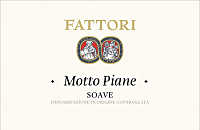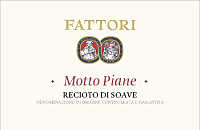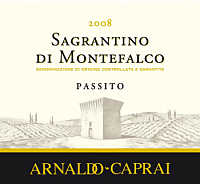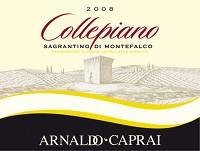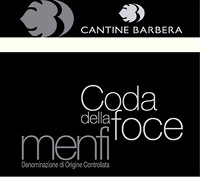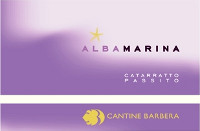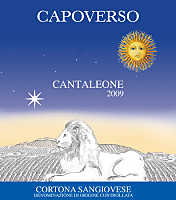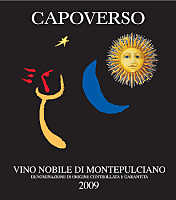|
Among the many components found in wine, alcohol certainly is the most
deplorable one. Not because it is alcohol, indeed for the notable effects
it can cause to the organism. On this regard, it should be noticed nothing is
good or bad: it is always the use, or the abuse, one makes of it to make it
either one or another. In fact, what gets alcohol under accusation are the
consequences derived from its abuse, of course not for its moderate and
intelligent consumption. It is not in fact anything new the moderate and wise
use of alcohol can also be beneficial for the organism, whereas the abuse - in
this case everyone agrees on that, no exception - besides being an idiot and
foolish act, which is not justifiable and agreeable in any case, it is
frequently cause of damages to the organism, also chronic and irreversible.
Pleasure is different from the disgraceful condition caused by dependency, in
particular when it causes deprecable consequences both for oneself and others.
Good and right, bad or wrong, alcohol is however a fundamental component in
wine, it probably is the element which historically determined the interest of
humans towards this beverage during the journey of the history of human beings.
Poets, writers, historians and philosophers of every era, have always praised
the virtues of wine and of that characteristics it had to give joy and
cheerfulness, to relief the soul, corroborate the spirit and body. In every
culture and society in which wine was found, it was always considered as a
sacred beverage, destined to the most significant rites, probably because of
the inebriating effects of alcohol, as well as for the association - in
particular red wine - it could easily evoke with the sacred liquid which could
maintain humans alive, that is blood. On this regard, it could be mentioned the
eucharistical use of wine in Christian religious rites, taking its origin from
this analogy.
It is now some time market is offering wine without any alcohol in it, produced
with an industrial process called dealcoholization, however the
importance of alcohol in sensorial tasting and in wine balance is fundamental.
On this regard, it should be noticed wine is produced by the alcoholic
fermentation of grape juice, a process that, unavoidably, brings to the
production of alcohol and, in case it is not properly done, to the production of
vinegar. The wine itself exists because of the existence of alcohol and the
complex biochemical process producing it thanks to the action of yeast, but -
this must be said and remembered - wine is not alcohol only. If we consider the
average content of alcohol in wine, this generally represents 13% of the
beverage, therefore it is not the main element. Wine, as it is commonly known,
is a complex beverage, not only from a sensorial point of view, but also from a
chemical point of view, where alcohol represents one of the hundreds of element
making it.
Alcohol, like already said, is the result of fermentation, a biochemical process
done by yeast, unicellular organisms that, in absence of oxygen, convert sugar
into ethyl alcohol and carbon dioxide. Fermentation, as a matter of fact, is the
process ensuring survival to yeast when there is no oxygen available, thanks to
the conversion of sugar. At the beginning of this complex process, yeast can
survive in condition of aerobic breathing - that is, in presence of
oxygen - and during this stage sugar is converted into water and carbon dioxide.
When the oxygen has been completely consumed, the process continues in
anaerobic conditions - that is in absence of oxygen - and it is during
this stage the process is called fermentation, ensuring survival with the energy
obtained from sugar only. Fermentation is however a process leading to a lethal
end for yeast, both because of the consumption of the only energy source, sugar,
as well as because ethyl alcohol, when found in high quantity, is toxic for
their survival.
|
| 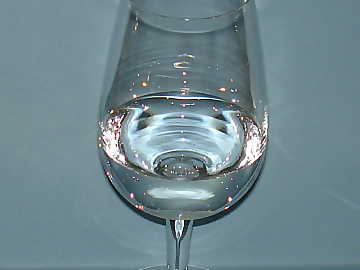 |
| Clear and limpid: alcohol in its pure form
shows as a transparent and crystalline liquid |
|
The fermentation process therefore ends - provided favorable environmental
conditions - both because of the total consumption of sugar, as well as for the
high quantity of alcohol that in certain cases is produced by yeast. Without
sugar, yeast have no possibility of survival and of nourishment, a condition
which unavoidably brings to the end of the biological activity, leaving to the
liquid a certain quantity of ethyl alcohol. It should be said the process of
fermentation also produces other substances, although in lower quantity than
ethyl alcohol, among the many, the “famous” and widely debated sulfur dioxide.
At the end of fermentation - technically called alcoholic or
primary - yeast will give back grape juice transformed into wine, a
complex beverage and characterized by countless aromas and flavors, in which
ethyl alcohol plays a fundamental role. It should also be said the so called
alcohol free wines are produced by this very process, to which, at the
end of fermentation, alcohol is eliminated by using specific methods, in
particular, the most common ones are inverse osmosis and cold
distillation.
For the sake of information, it should be said sometimes the process of
dealcoholization is used for table wines as well in order to lower the alcohol
volume of few units. Blind tasting tests done on dealcoholized wine, or
partially dealcoholized wines, have proven the process of alcohol removal also
removes other components of wine, in particular aromatic substances. In fact,
alcohol plays an active role in the perception of gustatory substances, and in
particular, olfactory substances. This can be explained, among the many factors,
thanks to the capability of alcohol to volatilize, by literally lifting up
aromatic substances from the surface of wine, therefore favoring their olfactory
perception, both intensity as well as quality and variety. For this reason, most
of the times systems used for dealcoholizing wines provides for the recovery and
subsequent reintroduction in the wine of the aromatic fraction extracted during
the removal of alcohol, a reintroduction that - in any case - will not have the
same intensity and quality of its original form.
Alcohol by volume currently found in table wines has an average value of 13.5%,
however it is not rare to find value reaching 14.5%, sometimes even higher than
that. In past times, however not so distant, alcohol by volume was lower, with
an average value of 12.5%, a value that, not only represented the average
volume, but also considered as average-high. Today this value is
considered as average-low and it is pretty hard to find wines with an
alcohol by volume of 12.5%. The reasons for the increasing of alcohol by volume
are many. Climate changes of the last years, characterized by a pretty hot and
torrid summertime, greatly affected the ripeness cycle of grapes and, with that,
the development of sugar, therefore increasing their quantity. Yeast, like
already said, use sugar to conduct fermentation: with a higher quantity
available, fermentation is longer and, at the same time, it is also produced a
higher quantity of alcohol.
Alcohol is one of the many elements contributing to gustatory balance of wine,
specifically, it is one of those components defined as soft, that is
useful in balancing all the substances defined as hard. As it is commonly
known, one of the primary characteristics defining quality in wine is balance.
An excessively round and smooth wine - a sensation to which
alcohol contributes - makes the gustatory profile of wine flat and dull, without
any trace of lively touch. A too much alcoholic wine, and not properly
balanced, will in fact cause this sensation in the mouth, besides being too much
“hot” because of the typical caustic and irritating effect on taste buds. The
typical tactile sensation of alcohol can in fact be diminished by a proper
balance, such as increasing astringency or acidity in a wine.
It should be noticed balance of alcohol does not lower the quantity found in a
wine, it simply lowers its perception. This means that, at the taste, a wine can
be perceived less alcoholic than it is for real, however the quantity of alcohol
does not undergo any kind of change. We can consider, for example, a wine
produced with the Nebbiolo grape. Fermentation of the must of this grape tends
to produce significant quantity of alcohol - sometimes higher than 14% -
however the presence of acid substances and astringency, both the typical
astringency of the grape as well as the one of the cask, make the wine balanced
and, with that, also the alcoholic sensation perceived in the mouth will seem
milder. It is therefore a relative perception and not quantitative one, a
concept valid for every other olfactory or gustatory stimulus. Moreover, the
perception of a stimulus and its intensity are also determined by the threshold
of perception of each subject.
Before discussing the organoleptic aspects associated to taste and the
contribution of alcohol in a wine's gustatory profile, let's focus on the role
played by this element in the perception of aromas. Ethyl alcohol is a volatile
substance, therefore - as such - it tends to “lift up” from the surface of the
wine and to dissolve in the air. During its volatilization, alcohol is extremely
useful in the perception of aromatic substances, as it literally
transports these elements upwards, therefore making their perception to the nose
easier. Like already said, a wine with a low content of alcohol - or with no
alcohol - seems to be less aromatic and certain olfactory components are quite
attenuated and more difficult to perceive to the nose. There is however an
exception to that as wines produced with the so called “aromatic” grapes, such
as Muscat Blanc and Gewürztraminer, thanks to the abundance and the intensity
of their aromatic components, are however well perceptible even without the help
of ethyl alcohol. For example, we could consider Moscato d'Asti: despite its
alcohol by volume is usually about 5%, its aromatic strength is however well
perceptible.
According to a gustatory point of view, alcohol is perceived in the mouth by
means of many organoleptic sensations, both gustatory as well as tactile. The
most evident and dominant sensation of alcohol is of tactile nature. The more
evident tactile effect produced by alcohol is recognizable in a sensation
recalling heat, usually described as a pseudocaloric effect. This
caustic effect is the consequence of dryness of mouth's mucosa produced by
alcohol, an irritation which can be easily confused with a “burning”
sensation. The higher the quantity of alcohol, to be precise, the more the
alcohol in wine is unbalanced, the stronger the burning sensation it produces.
We could consider, for example, the effect of a distillate, in which the
quantity of alcohol is pretty high and, although balanced by other components,
the burning sensation is evident and can also last many seconds.
When the tactile burning sensation will be over, it will finally be possible to
perceive the taste of alcohol, which is basically sweet. It is not an
“evident” sweetness as in the case of sugar, however the sweet sensation will
be well perceptible in the taste of alcohol. Another gustatory-tactile
characteristic of alcohol is roundness produced in the mouth: for this
reason, and because of its basically sweet taste, alcohol is classified among
“soft” components in the determination of a wine balance. Its gustatory excess
- sweetness and roundness - must therefore be properly balanced by “hard”
substances, such as astringency, acidity and a quantity of mineral elements. On
the other hand, its presence will be useful in balancing the excess of both
acidity and astringency found in a wine, therefore useful both in white wines,
where acidity is a characteristic element, as well as in red wines, in which we
have both acidity and - in particular - astringency produced by tannins.
|


